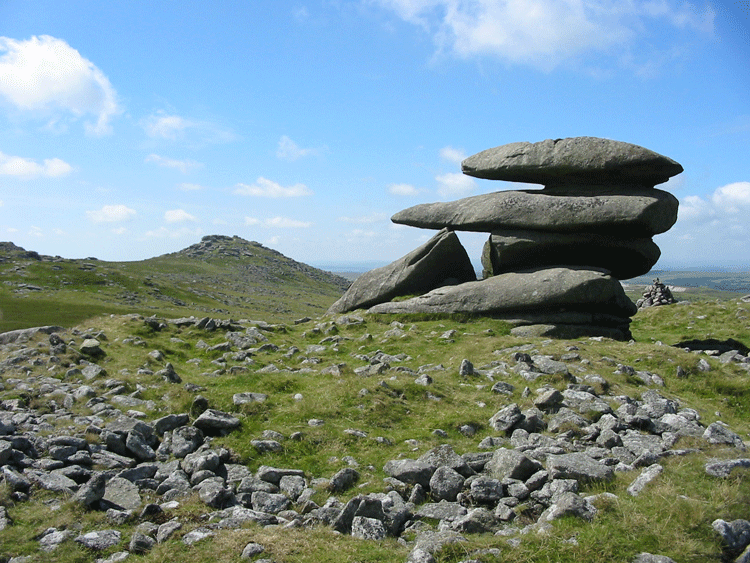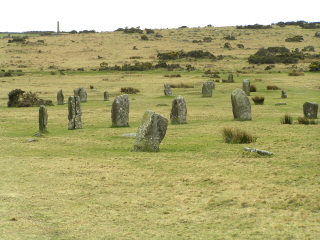In our discussions last week I was really stuck by Bradley’s idea that if there is no built environment, it is an unaltered place. As a place that combines the natural with sacred importance, Bodmin Moor presents a good chance to explore these ideas. If the built environment is only a formalization of pre-existing ideas, isn’t the human conception of a specific environment already created? The ‘built environment’ we encounter in this landscape is what happens to best survive. The wooden predecessors to these stone monuments on the landscape would have preceded the current remains. Before that, however, human conceptual monuments would have been the ultimate forerunner. Simply the human creation of an understanding of the environment changes the landscape.

The most obvious is that the landscape contains different meanings to those who move through it and these ideas alter their own landscape. A good example of human conceptions altering the landscape can be seen in the Dreaming of the aboriginal Australians. When they come encounter a rock with unusual colors that was previously unknown to them, they create a narrative to explain its existance that fits within their own Dreaming. The rock is no longer a natural, untouched thing, rather, it was a deer that was strewn across the ground. By placing the rock into their Dreaming framework, the place is altered. While this does not result in any literal, physical changes, the fact that this place is now a part of their Dreaming makes it inherently different to them. These changes are much easier to see from an ethnographic investigation, but getting to these different perceptions of the world archaeologically presents many more problems.
Brining these ideas back to Bodmin Moor, we can try to picture these same interactions with the natural, unaltered landscape. The Tors were a very important part of early, pre-built-environment perceptions of the landscape. The creation of a Dreaming in this landscape giving the Tors a great deal of religious significance altered the landscape. The conception of one place as sacred or important inspires many forms of human action. The mere choice to step in one place or direction changes the landscape, even if it is only a footprint. In this sense, I would pose the question, does mere presence of humans in a landscape make it ‘altered’?

